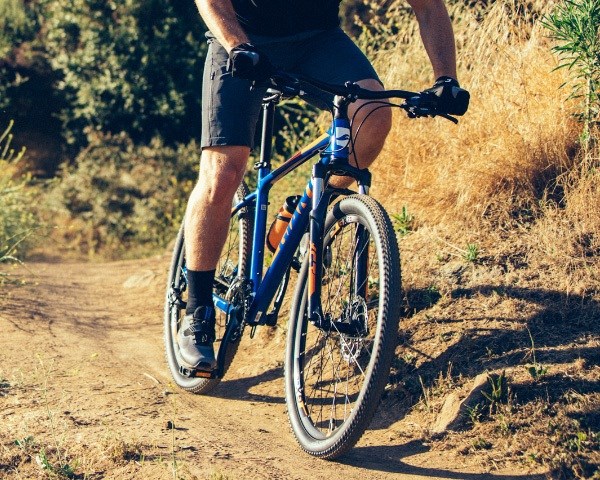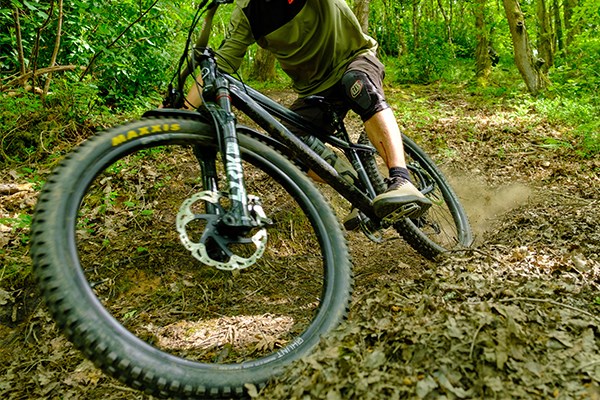Is a Hardtail mountain bike right for me?
If you’re new to the cycling world, we highly recommend taking a look at our bike buying guide overview or our mountain bike buying guide to help you decide what type of bike is right for your needs.
When you’re choosing a hardtail mountain bike, there are a few things to look out for which can help you to work out the quality and performance you can expect from a particular model.
Usage and suspension travel
Depending on the type of mountain bike riding you’ll be doing, you will want a bike with a longer travel or shorter travel suspension fork as well as components suited to more or less technical terrain.
Frame Material
Hardtail MTB frames are mostly made from aluminium alloy. High-end cross-country race bikes will have carbon fibre frames while trail hardtails and jump bikes sometimes feature steel frames.

Aluminium alloy frames are strong and lightweight. More expensive alloy hardtail MTBs tend to have ‘butted’ and/or formed frames which are lighter but just as strong.

Steel frames are heavier but offer a more comfortable ride, especially on higher end models, thanks to the more compliant nature of steel.

Carbon fibre composite frames offer the best of both worlds as they are strong, lightweight and comfortable. They are more expensive however and carbon hardtails start at around £1,300
Groupset and Drivetrain
A bike’s groupset, or drivetrain, is where the biggest difference in component quality is seen. A complete groupset comprises of the following parts:
- Chainset (aka Crankset)
- Bottom bracket
- Brakes
- Brake levers
- Shifters
- Front & rear derailleur
- Chain
- Cassette
Mountain bike groupset components are typically supplied by either Shimano or SRAM, with additional manufacturers like Formula, Hope, Magura, Tektro and TRP supplying brake systems.
Shimano & SRAM both produce a range of groupsets to suit different budgets. The hierarchy table here compares the different Shimano & SRAM groupsets to determine which bikes offer the best performance.
What gearing options are there?
Most hardtails offer a wide range of gears for taking on a variety of terrain. It’s not all about the number of gears though as fewer gears on the front, combined with a wide range rear cassette are much easier to use, but still give you the same wide range of gears. As you go up the price points shifting gets easier with more cogs on the rear cassette and fewer front chainrings.
 |  | |
|---|---|---|
| Professional |
11
 |
12
 AXS Eagle 12
 AXS Eagle |
|
12
 |
11
 11
 |
|
|
11
 |
||
| Enthusiast |
12
 |
|
|
11
 |
10
 |
|
|
10
 |
11
 |
|
| Entry |
9
 |
12
 Eagle |
|
9
 |
9-10
 |
|
|
9
 |
9-10
 |
|
|
7
 |
7-10
 |
Entry-level hardtails will have a triple chainset with a seven (3x7) or eight (3x8) speed cassette
Mid-level hardtails tend to have a double chainset with a nine (2x9) or ten (1x10) speed cassette
High-end hardtails get a single front chain ring with a eleven (1x11) or even twelve (1x12) speed cassette
Which are the best brakes?
There are three types of brakes found on most hardtail mountain bikes:

Rim brakes are powerful in the dry but are significantly less powerful in the wet.

Mechanical disc brakes are powerful in all weather conditions

Hydraulic disc brakes are the most powerful in all weather conditions, and also offer the best braking precision.
Wheel Size
You’ve probably noticed that mountain bikes come in a choice of wheel size, mainly a 27.5 inch wheel (also known as a 650B wheel) or a 29inch wheel (known as a 29er). Another option is 27.5+ or 6Fattie wheels which bridge the gap between 27.5” and 29” wheels. The traditional MTB wheel size is 26”, but are now only found on some small sized MTBs as well as jump bikes. The difference between these wheel sizes can have a dramatic effect on the way a bike feels and handles out on the trail.
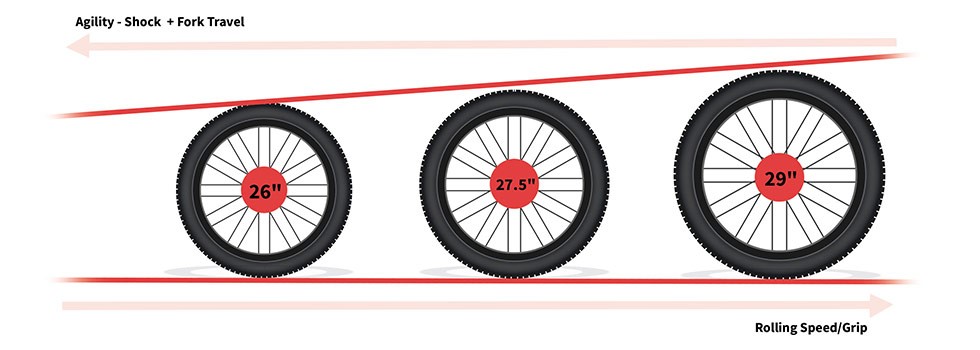
27.5” (650b) wheels strike the ideal balance between fast rolling and nimble handling. They are lighter than 29” wheels so are faster to accelerate. On the other hand, the smaller wheel size rolls less efficiently than the larger size, making the bike more prone to losing speed over rough ground.
29” wheels roll fastest but are less nimble. These wheels are naturally smoother over rough ground but are heavier and slower to accelerate. Larger riders may find a better fit on a 29er, but smaller riders may find 29” wheels a little cumbersome.
27.5+ (6fattie) wheels feature wider 2.8” – 3.0” tyres and offer more cushioning (float) as well as more grip. With the extra size of the high-volume tyres, the overall wheel diameter is similar to a 29er so these wheels carry speed very well on rough ground. Plus sized wheels are ideal for riding more challenging terrain.
26” wheels are the nimblest and are great for smaller riders as well as jump bikes. While quick to accelerate these wheels are the slowest over rough ground.
Does tyre width make a difference?
Tyre width effects both speed as well as grip. Narrower tyres are faster rolling while wider ones offer more grip as well as more cushioning (float).

1.95” - 2.0” tyres roll quickly and are good for recreational riding and light off-roading.
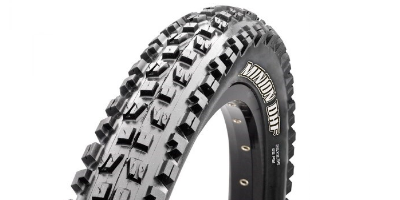
2.2” - 2.6” tyres are a little slower on smooth surfaces but offer much better grip in the corners and are ideal for MTB trail riding
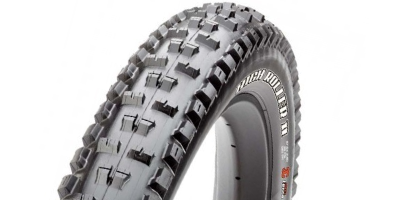
Plus size (6fattie) 2.8” – 3.0” tyres increase the overall diameter of the wheel so still roll quite quickly while offering a lot more grip and float. These are best for rougher terrain
Suspension Fork
The performance of suspension forks varies a lot. Forks on higher end bikes tend to offer more control and are more adjustable. Look for Fox, RockShox or Manitou forks with adjustable rebound and compression damping for the best performance on technical trails. The performance level you require will depend on what type of riding you want to do.
For recreational riding on roads and gravel tracks, you won’t need a high-performance fork. A lockout feature can be useful for more efficient climbing on roads and smoother tracks. Air sprung forks are lighter than coil sprung forks.
For cross cross-country mountain biking lightweight air sprung forks are best. Adjustable rebound damping is essential for serious off-roading and a remote lockout switch will allow you to quickly firm up the suspension when climbing.
Trail hardtails feature longer travel suspension forks for riding on rougher terrain. Adjustable rebound damping is essential for control on challenging trails. Lockout is less important on these bikes as they are catering for riders who like the downs more than the ups. Adjustable compression damping is useful as it can help you achieve optimum performance levels. Thru-axles and tapered steerer tubes improve steering control.
